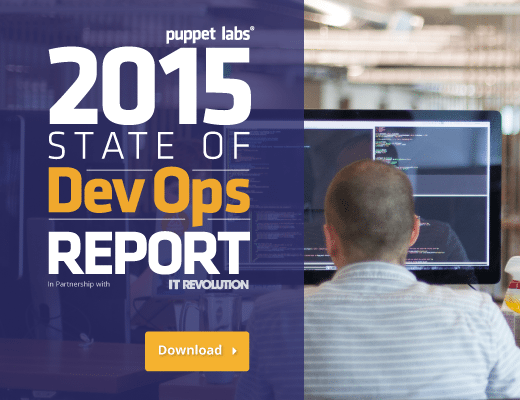Sometimes you can learn as much from what isn’t said in a report. ThePuppet Labs 2015 State of DevOps Report details a number of valuable trends and insights distilled from the survey results, but it also reveals some interesting information based on what it doesn’t say.
I wrote about the top 10 takeaways and insights from this year’s State of DevOps Report in this post:
Puppet Labs recently released its fourth State of DevOps report. The Puppet Labs 2015 State of DevOps Report highlights trends in the DevOps revolution and includes a variety of valuable insights that organizations considering DevOps, or those that have already embraced it, can learn from. There are also a few things the report doesn’t talk about—and those provide perhaps even more valuable insight.
The annual report from Puppet Labs has already been established as a barometer for the DevOps movement. This year’s survey includes responses from 4,976 individuals scattered across the globe. One interesting note about the demographics of the survey is that 55 percent of the respondents are in companies of fewer than 500 people, yet 48 percent of the respondents have an infrastructure of 500 or more servers. It’s a testament to what can be achieved with cloud computing and DevOps for small organizations to be able to deploy and manage such vast infrastructures.
I reviewed the Puppet Labs 2015 State of DevOps Report myself and spoke with a number of DevOps leaders to get additional insight. “This report is a good indicator as to where we are with DevOps and as you can see, we are still explaining it after four years, which has to tell you something,” says TK Keanini, CTO of threat protection firm Lancope. “DevOps to those who are in it is critical and for those new to it, they are sometimes hunting for a reason, which is awkward. The kind of awkwardness you have with a mask and snorkel when there is no water around you—you can find a use case I’m sure, but it is going to be weird at best.”
To the extent Keanini’s assessment is accurate, this report provides some valuable information to help those organizations figure out their use cases and embrace DevOps effectively. Here is a breakdown of the 10 most important takeaways.
1. DevOps accelerates deployment
There’s a long-standing mantra in IT that you can have speed or reliability but not both. The findings of this report disagree. High-performing organizations deploy code 30 times more frequently than their peers. The survey also found that the lead time—measured as the time required for changes to go from “code committed” to successfully running code in production—is 200 times faster for these high-performing organizations.
See the full list on TechBeacon: 2015 State of DevOps Report: Top 10 takeaways and insights.
- Ransomware-Proof Your Data Backups with Immutability - April 10, 2024
- Unearthing Identity Threat Exposures - April 1, 2024
- Future of Tech and Cybersecurity Looks Bright Thanks to AI - March 26, 2024




Comments are closed.